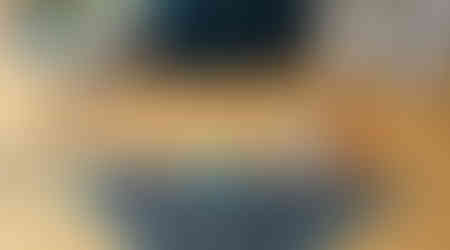Knitting Tutorial: How to Alternate Skeins and Achieve a Stretchy Edge
- Sönna Schuttner

- Sep 2, 2024
- 3 min read
Updated: Sep 23, 2024
Knitting with hand dyed yarn brings a beautiful, one-of-a-kind quality to your projects, but it can also present some unique challenges, especially when it comes to alternating skeins. Without the right technique, you can end up with unwanted transition lines or a tight, rigid edge. In this photo and video tutorial will guide you step by step through the process of alternating skeins to ensure constant knit fabric and a stretchy edge. Whether you're new to working with hand dyed yarn or looking for a foolproof way to avoid those dreaded lines, this tutorial will help you achieve flawless results.
Check out this blog post for a deeper explanation of why every hand dyed skein of yarn is unique (even when they are from the same dye pan), how that unique quality can cause issues for a knitter and why the technique shared in this blog post can help.
Jump to:
The Solution: A Photo Tutorial
I used this technique in my Autumn Waves Wrap to create a visually consistent fabric, even though there were slight differences between the skeins dyed by Less Traveled Yarns. You can find the pattern in the SDK Shop or on Ravelry.
The Problem: An Overly Tight Edge
So... why can't we just carry our yarn up the side edge of our project when alternating skeins in knitting?
Take a look at the two edges of this shawl baby. I did not use the technique I share in this post while knitting it. The left edge is clearly shorter than the right edge. (Please excuse the scissors used for relative size rather than a ruler - I have kids who take off with important tools and don't return them.)
This issue is caused by the difference in stretchy factor between a single strand being pulled length wise (as it will be when carried up the side) and the stretchy factor of a whole stitch (which can borrow a bit from its neighbors if needed).
The Solution: A Photo Tutorial
I used two colors in the baby shawls I made in order to better illustrate the process but I most often make use of this technique when working with two hand-dyed skeins of the same colorway. I also added a row of garter ridge because I thought it was pretty, but this technique will work with any stitch pattern.
In essence, we are going to start each row with a yarn over and then drop it off the needle on the following row. Let me show you how:










I traced over some of the edge stitches in every other row with red. The blue shows where the unused strand is being carried up the edge of the project. As you can see, any excess yarn from the yarn over blocks smooth, but is still available when needed to create a stretchy edge.
The Solution: A Video Tutorial
How to Alternate Skeins of Hand Dyed Yarn and Maintain a Stretchy Edge
Did you enjoy this video and want to be sure to find it later? Click the image below to pin it to your yarny Pinterest board!

I would love to hear from you! Do you have a favorite dye style? Do you work with hand-dyed variegated yarn often and if so, who are some of your favorite dyers? How do you pair pattern and yarn in a way that lets them both shine? Share in the comments!
Happy Making! ~Sönna
Like what you find here?
Tap the "Sign Up" link in the top right of this page to never miss a blog post!
Support my work:
This post may contain affiliate links. If you make a purchase via one of the links in this post, I will receive a commission at no extra cost to you. This blog post contains no adds. However if you want to support my work in other ways, feel free to fuel me with a kofi.











Comments